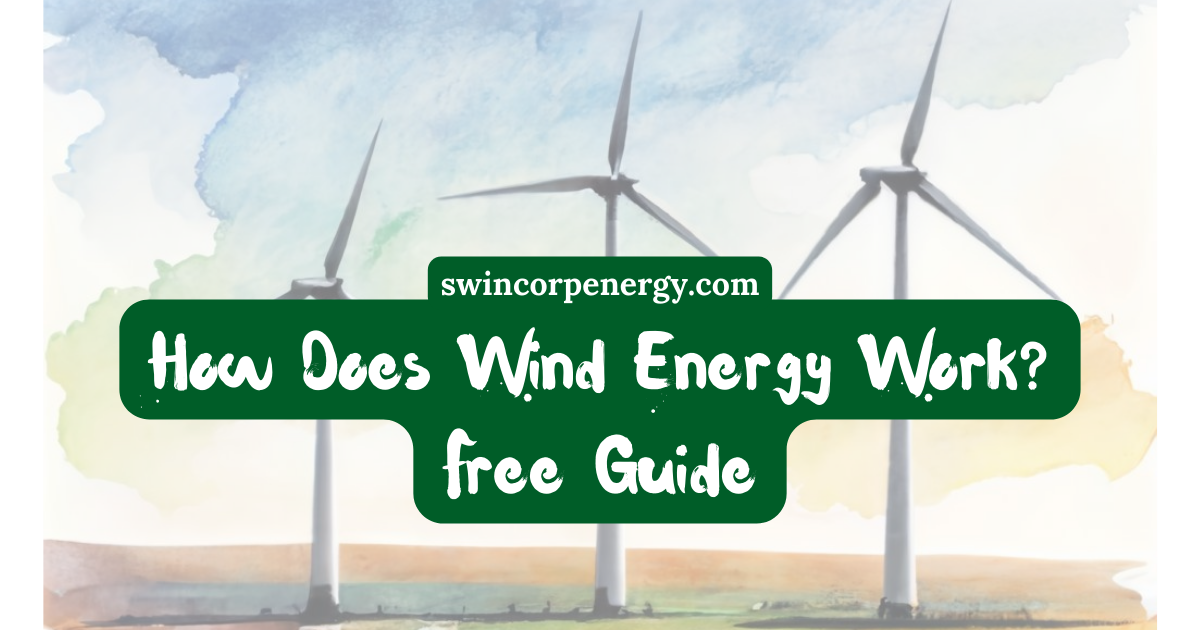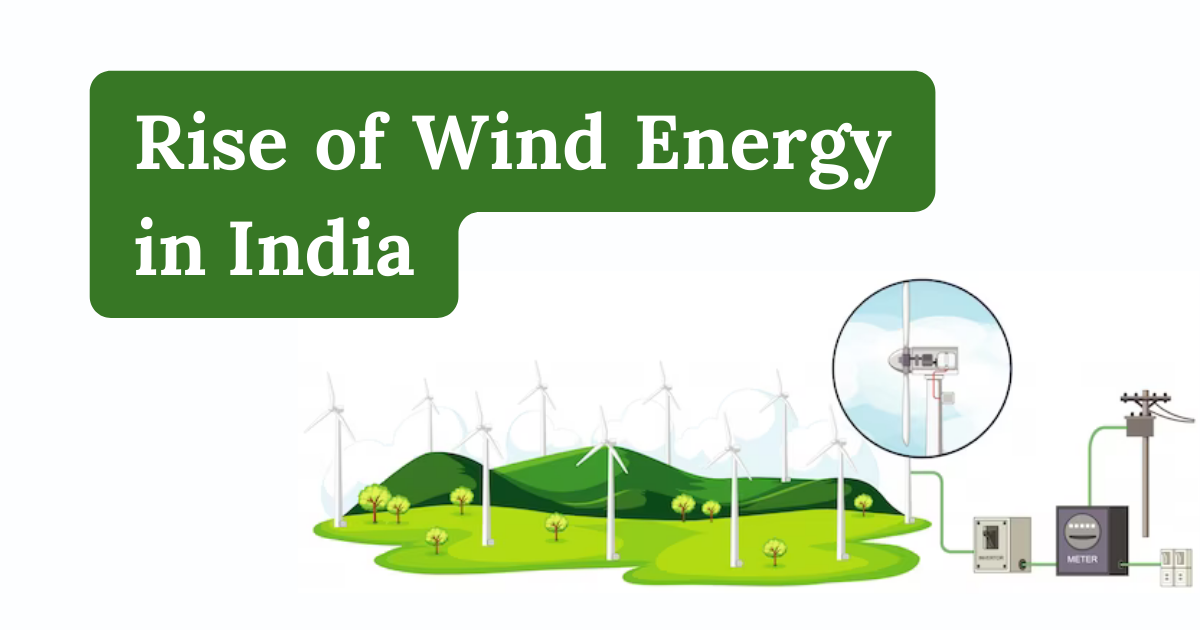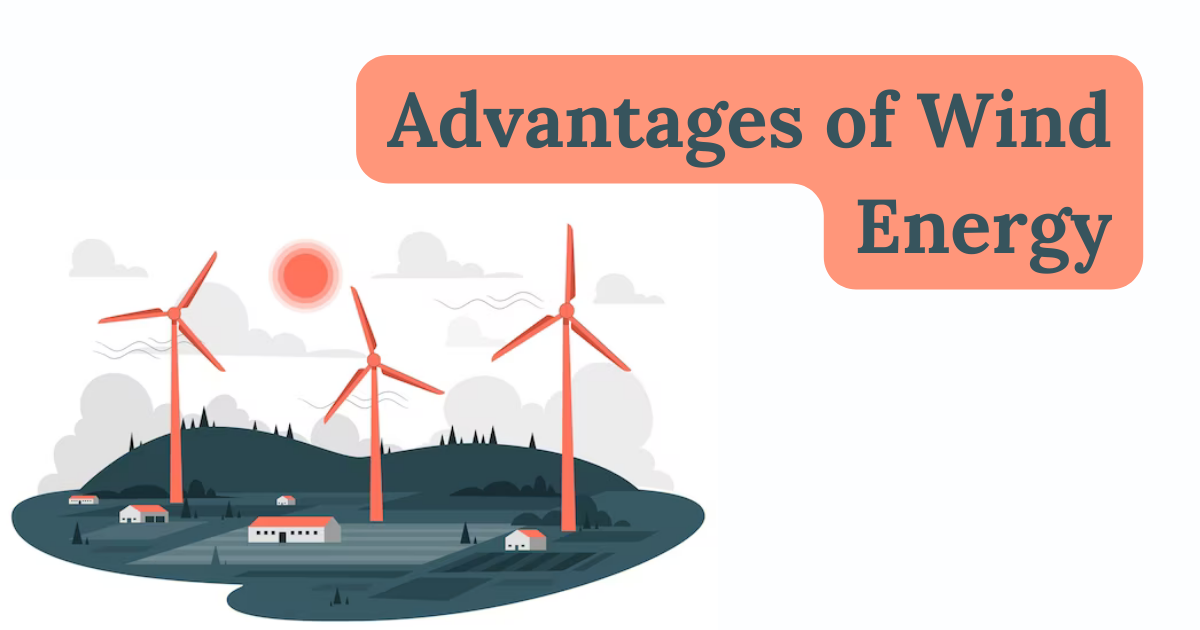How Wind Energy Works ?
In a world increasingly concerned about environmental sustainability, renewable energy sources have emerged as beacons of hope for a cleaner and greener future. Among these, wind energy stands out as a reliable and abundant source of clean power, harnessing the kinetic energy of the wind to generate electricity.
Understanding the Wind Turbine: The Heart of Wind Energy
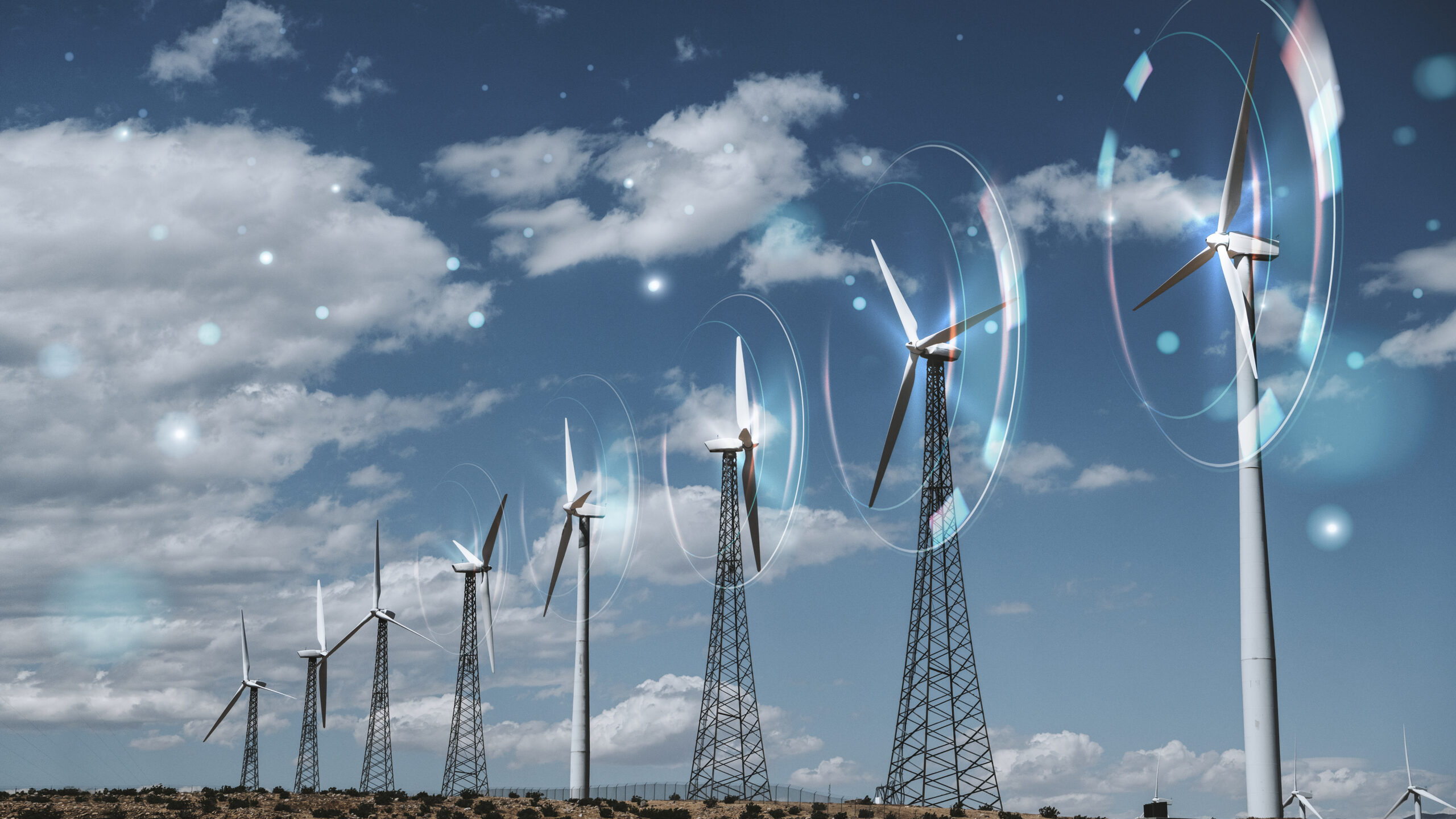
At the heart of wind energy conversion lies the wind turbine, a towering structure that transforms the wind’s energy into electricity. These elegant giants, often seen dotting landscapes, consist of several key components:
- Blades: The wind turbine’s signature feature, the blades are typically made from lightweight yet durable materials like fiberglass or carbon fiber. Their aerodynamic shape, inspired by airplane wings, captures the wind’s energy, causing them to spin.
- Rotor: The rotor, or hub, is the central axis to which the blades are attached. It rotates in sync with the blades, transferring the kinetic energy generated into a rotating shaft.
- Gearbox: In many wind turbines, a gearbox is employed to increase the rotational speed of the shaft. This higher speed is crucial for efficient electricity generation.
- Generator: The heart of the electrical conversion process, the generator transforms the mechanical energy from the rotating shaft into electrical energy. This is achieved through the principle of electromagnetic induction, where a rotating magnet induces an electric current in surrounding coils.
- Nacelle: The nacelle, the housing encasing the rotor, gearbox, and generator, sits atop the tower and protects the delicate components from the elements.
- Tower: The tall, sturdy tower supports the entire wind turbine structure, providing a stable base for the nacelle and blades to operate smoothly.
READ OUR PREVIOUS ARTICLES:
The Power Generation Process
The process of electricity generation from wind energy involves a seamless transfer of energy through the wind turbine’s components:
- Wind Movement: Wind, driven by atmospheric pressure differences, strikes the blades of the wind turbine.
- Blade Rotation: The aerodynamic interaction between the wind and the blades generates lift, causing the rotor to spin.
- Mechanical Energy Transfer: The rotational motion of the rotor is transmitted through a shaft to the gearbox.
- Speed Amplification: The gearbox increases the rotational speed of the shaft, ensuring efficient energy conversion.
- Electrical Generation: The high-speed shaft drives the generator, which transforms the mechanical energy into electrical energy.
- Electricity Transmission: The generated electricity is transmitted through cables to the power grid for distribution.
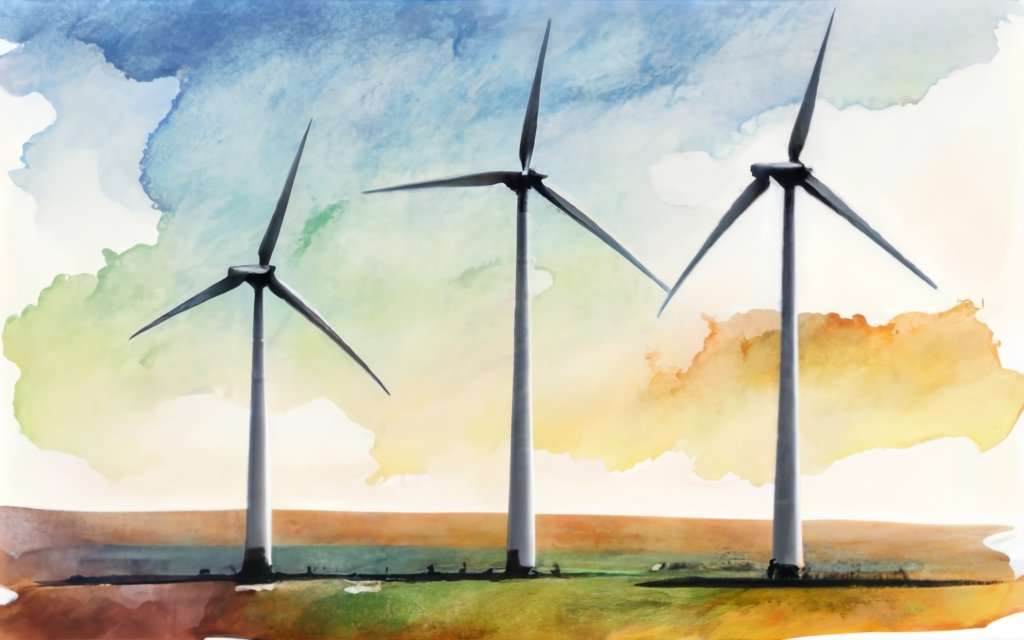
The Aerodynamics of Wind Turbines: Converting Wind into Rotation
The heart of a wind turbine lies in its rotor, a collection of propeller-like blades strategically positioned to capture the wind’s energy. As the wind flows across these blades, a pressure difference is created, with lower pressure on the curved side and higher pressure on the flat side. This pressure differential generates two crucial forces: lift and drag. Lift, the dominant force, pushes the blades upward and causes the rotor to spin. Drag, on the other hand, opposes the motion of the blades but plays a role in stabilizing the rotor.
The Mechanical Symphony: From Rotation to Electricity
The spinning rotor, now a whirling powerhouse of kinetic energy, sets in motion a mechanical symphony. The rotor shaft, connected to the rotor, transmits the rotational energy to the gearbox, a complex system of gears that amplifies the rotation speed. This increased rotational speed is crucial for the next stage in the energy conversion process: electricity generation.
The Generator: Transforming Mechanical Energy into Electricity
At the pinnacle of the wind turbine’s tower lies the generator, the maestro of electricity production. The amplified rotational energy from the gearbox drives the generator’s shaft, causing its coils to spin within a magnetic field. This movement generates an electrical current, the heart of electricity. The generator converts the mechanical energy into electrical energy, the very power that flows through our homes and industries.
The Grid Connection: Integrating Wind Power into the Electricity Network
The electricity generated by the wind turbine is not yet ready to power our homes. It first needs to undergo a transformation to match the voltage and frequency requirements of the electricity grid. This is where the transformer steps in. The transformer increases the voltage of the electricity, making it suitable for transmission over long distances through power lines. Once the electricity reaches the grid, it joins the pool of electricity generated from various sources, ready to be distributed to consumers.
The Significance of Wind Energy: A Sustainable Solution
Wind energy offers a multitude of benefits that make it a compelling choice for a sustainable energy future:
- Renewability: Wind is a naturally replenishing resource, making it a sustainable energy source that can be harnessed without depleting finite resources.
- Environmental Friendliness: Unlike fossil fuels, wind energy generation does not produce harmful emissions, contributing significantly to cleaner air and reduced greenhouse gas concentrations.
- Economic Viability: Wind energy costs have declined steadily over the years, making it an increasingly cost-competitive energy source.
- Job Creation: The wind energy industry generates employment opportunities in manufacturing, installation, and maintenance, boosting local economies.
Advantages of Wind Energy
Wind energy offers a multitude of advantages, making it a compelling choice for sustainable energy production:
- Renewable Source: Wind energy taps into a continuously replenished resource, ensuring a sustainable supply of energy.
- Environmentally Friendly: Unlike fossil fuels, wind energy generation does not produce harmful emissions, contributing to cleaner air and reduced greenhouse gas concentrations.
- Scalability: Wind energy projects can be scaled to various sizes, catering to local and large-scale energy needs.
- Versatility: Wind energy can be harnessed in diverse geographical locations, including coastal areas, inland plains, and mountainous regions.
- Economic Benefits: Wind energy projects create jobs, stimulate local economies, and reduce reliance on imported fossil fuels.
Challenges and Considerations
Despite its numerous advantages, wind energy also faces certain challenges:
- Variability: Wind availability is intermittent, influenced by weather patterns and time of day, necessitating the integration of storage solutions.
- Site Selection: Wind turbines require careful site selection to ensure optimal wind conditions and minimize environmental impact.
- Visual Impact: Large-scale wind farms may pose aesthetic concerns, requiring careful planning and community engagement.
- Wildlife Impact: Proper siting and mitigation measures are essential to protect wildlife from potential harm.
The Future of Wind Energy
Wind energy is poised for continued growth and technological advancements. Innovations in blade design, materials, and control systems are expected to enhance efficiency, reduce costs, and expand the applicability of wind energy. Additionally, advancements in energy storage technologies will further integrate wind energy into the power grid, enabling a more reliable and consistent supply of renewable electricity.
Conclusion
Wind energy has emerged as a transformative force in the transition towards a sustainable energy future. Its clean, renewable nature, coupled with advancements in technology and cost-effectiveness, makes wind energy a viable and increasingly attractive option for meeting our energy demands. As we strive to reduce our reliance on fossil fuels and mitigate climate change, wind energy stands as a beacon of hope, promising a cleaner, greener, and more sustainable future for generations to come.
Keys : ‘how wind energy is generated from scratch’, ‘main parts of a wind turbine’, ‘how wind turbines convert wind energy into electricity’, ‘benefits of using wind power’, ‘drawbacks of wind power’, ‘uses of wind energy in daily life’, ‘effect of wind farms on environment’, ‘price of wind power installation’, ‘prospects of wind energy in the future’, ‘Wind energy basics”Wind turbine components”Wind energy conversion process”Advantages of wind energy”Disadvantages of wind energy”Applications of wind energy”Environmental impact of wind energy”Cost of wind energy”Future of wind energy’
